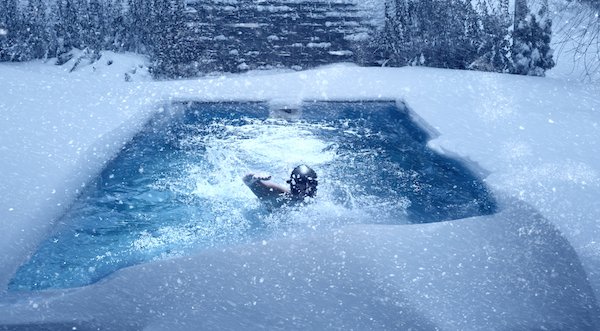A DIY Guide and When to Call a Professional
As the swimming season is coming to a close, pool owners turn their attention to winterization. Proper pool closing protects your investment from the harsh winter elements, ensuring a smooth and easy opening come spring. This guide will equip you with the knowledge to winterize your pool yourself, while also highlighting instances where seeking professional help might be wise.
The Importance of Winterization
Winterizing your pool goes beyond simply covering it up. It’s a multi-step process that safeguards your pool walls, equipment, and water quality throughout the off-season. Here’s why winterization matters:
- Prevents Damage: Unbalanced water chemistry can lead to etching, scaling, and even cracks in your pool liner during winter. Winterizing chemicals help maintain proper balance.
- Protects Equipment: Frozen water expands, potentially causing burst pipes and damaged pumps if the pool isn’t properly drained.
- Maintains Water Quality: Winter chemicals prevent algae growth and control bacteria during the stagnant winter months.
- Simplifies Spring Opening: A well-winterized pool requires minimal cleaning and chemical adjustments when it’s time to reopen.
DIY Winterization: A Step-by-Step Guide
For the handy homeowner, winterizing your pool can be a rewarding DIY project. Here’s a breakdown of the essential steps:
- Balance the Water: Test and adjust your pool’s pH and alkalinity levels to prevent corrosion and scaling.
- Clean Thoroughly: Scrub the walls and floor with a pool brush, then vacuum to remove debris. Leaving dirt and leaves behind can stain the pool liner.
- Winterize the Water: Add recommended winterizing chemicals to the deep end of your pool. These chemicals typically prevent algae growth and help maintain water clarity.
- Clean and Store Equipment: Clean the filter, pump basket, and skimmer. Remove any unused chlorine from the chlorinator. Backwash and clean the sand filter media. Install a skimmer guard and plug the return line. Lower the water level according to your pool’s specific needs and your technician’s recommendations. Detach hoses and remove drain plugs from the pump, filter tank, and other equipment. Store all equipment and plugs in a safe, warm, and dry location for easy access next spring.
Optional but Helpful:
- Air Pillows: These inflatable pillows placed in the pool center provide support for the winter cover, preventing water and snow accumulation that can strain the cover. Anchor the pillows securely using tethers.
- Winter Cover: Invest in a high-quality winter cover specifically designed for your pool size and shape. A proper cover keeps out dirt, debris, rain, and snow, minimizing the impact on your pool’s water chemistry. Routinely check the cover throughout winter to remove excess water or snow buildup that could weigh it down.
When to Call a Professional
While DIY winterization is achievable, there are situations where seeking professional help is recommended:
- Complex Pool Systems: Pools with intricate plumbing systems, waterfalls, or automated features may benefit from a professional’s touch to ensure proper winterization.
- Limited Time or Expertise: If you’re short on time or lack the confidence to tackle the process yourself, a pool service company can efficiently and effectively winterize your pool.
- Leak Suspicion: If you suspect a leak in your pool or equipment, it’s crucial to address the issue before winter to prevent further damage. A professional can diagnose and repair leaks before winterization.
- First-Time Pool Owner: If you’re a new pool owner, consider professional winterization for the first year. This allows you to observe the process and gain valuable knowledge for future DIY attempts.
Winterizing Your Pool Furniture
Don’t forget about your poolside furniture! To protect it from winter’s harsh elements:
- Store Cushions: Remove and store cushions in a dry, sheltered location to prevent mold and mildew growth.
- Clean and Cover Remaining Furniture: Clean non-cushioned furniture and cover it with weatherproof material.
- Bring In Decor: Store poolside décor items like floats, toys, and umbrellas indoors for the winter.
By following these steps and considering your skillset and comfort level, you can effectively winterize your pool and ensure it’s ready for another season of fun when spring arrives. Remember, proper winterization protects your pool, saves time and money in the long run, and sets you up for a hassle-free pool opening come spring.







